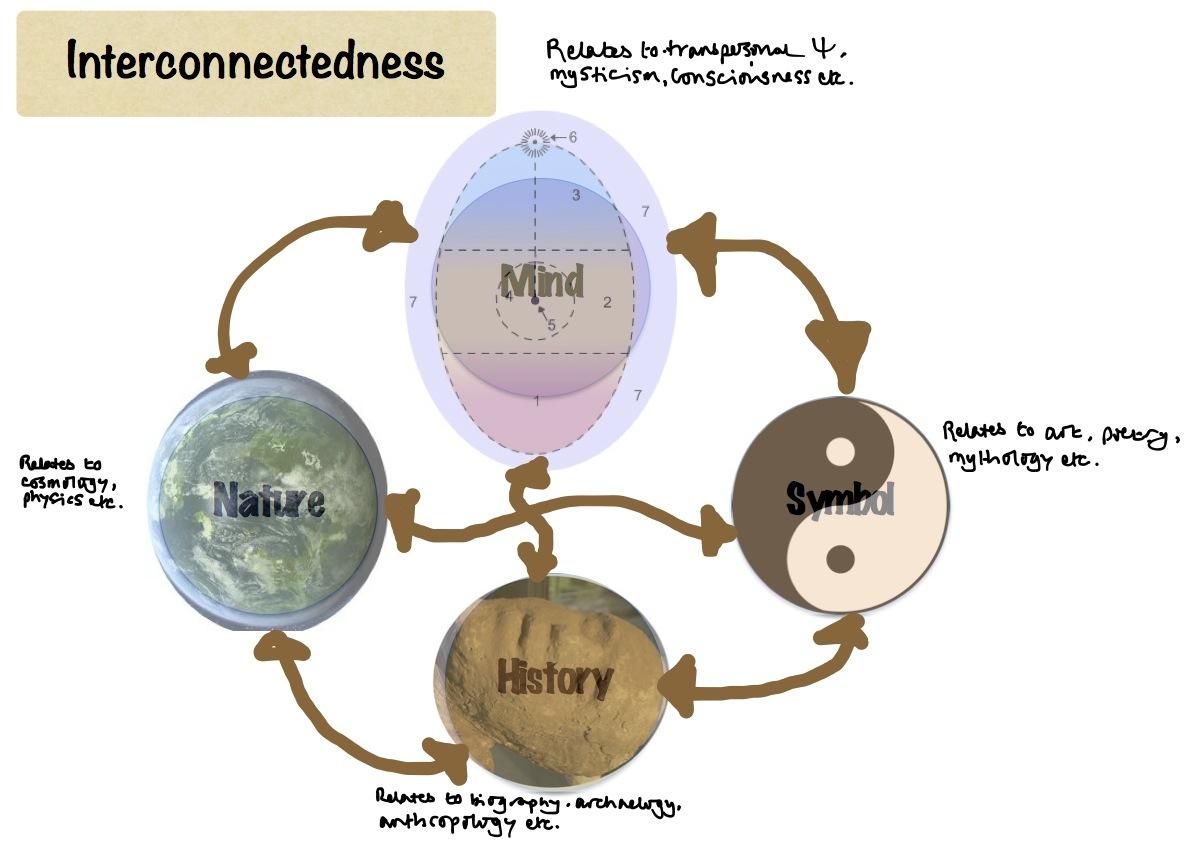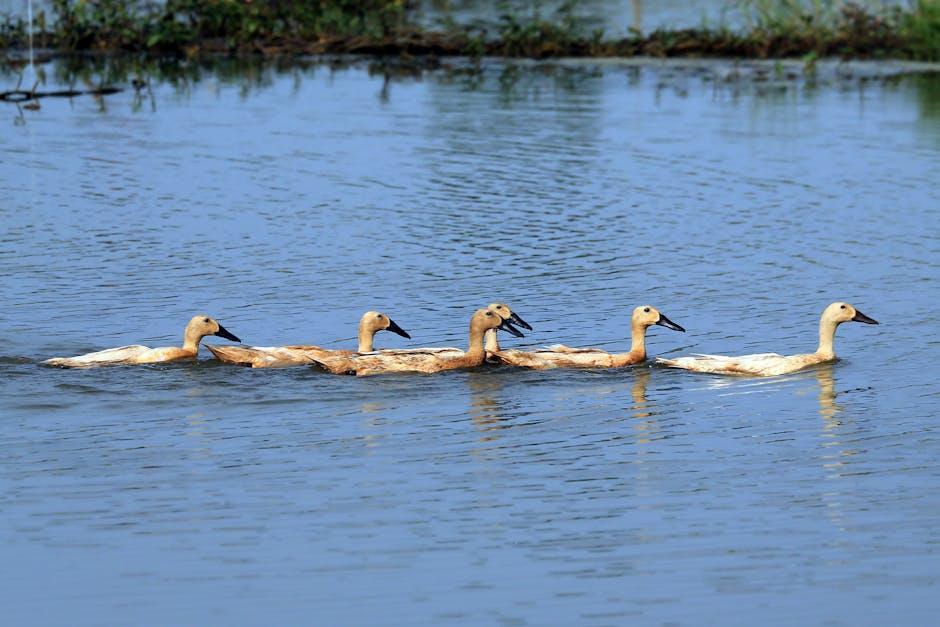Table of Contents
- Exploring Gaia Theory and its Impact on Environmental Science
- James Lovelocks Innovations in Ecological Thinking
- The Interconnectedness of Life: Lovelocks Vision for Sustainability
- Practical Applications of Lovelocks Ideas in Modern Ecology
- A Legacy of Awareness: How Lovelock Changed the Conversation on Climate Change
- Q&A
- The Way Forward

Exploring Gaia Theory and its Impact on Environmental Science
The Gaia Theory, proposed by James Lovelock, suggests that Earth functions as a self-regulating system, where living organisms and their inorganic surroundings interact to maintain conditions conducive to life. This paradigm shift not only challenges the traditional view of nature as a collection of separate entities but also emphasizes the interconnectedness of life. Understanding this perspective is crucial for modern environmental science, as it promotes a holistic view of ecosystems that is essential for effective conservation strategies.
One of the significant impacts of the Gaia Theory on environmental science includes the introduction of the concept of homeostasis in ecological systems. Through this lens, scientists can explore how various environmental factors—such as climate, atmospheric composition, and oceanic processes—work together to sustain life. Key elements of this relationship include:
- Feedback Mechanisms: These processes illustrate how changes in one component of the Earth system can influence others, fostering resilience.
- Ecological Balance: The theory supports the idea that ecosystems strive for balance, promoting biodiversity and healthy habitats.
- Human Impact: Understanding Gaia encourages the assessment of human influence on natural systems, underlining the urgency of sustainable practices.
Moreover, Gaia Theory has sparked vital discussions about environmental ethics and responsibility. By highlighting the intrinsic value of every organism in maintaining life-supporting processes, it compels us to reconsider our approach towards resource management and conservation efforts. The following table encapsulates the contributions of Lovelock’s theory to contemporary environmental thought:
| Contribution | Description |
|---|---|
| Holistic Approaches | Encourages viewing ecosystems as interconnected systems rather than isolated entities. |
| Resilience Thinking | Strengthens understanding of how ecosystems can adapt to changes and recover from disturbances. |
| Sustainability Advocacy | Promotes actions aimed at reducing human impact on natural systems for future generations. |
James Lovelocks Innovations in Ecological Thinking
James Lovelock, a visionary scientist, profoundly impacted ecological thought through his groundbreaking Gaia theory. This concept posits that the Earth functions as a self-regulating system, where living organisms and their inorganic surroundings interact synergistically to sustain life. The essence of Gaia theory challenges the traditional view of the environment, suggesting that ecosystems are not merely collections of individual organisms but dynamic networks that maintain balance and support life. Lovelock’s perspective encourages us to see the planet as a unified entity, changing how we approach environmental conservation.
Beyond the Gaia theory, Lovelock’s innovations included the development of sophisticated tools to monitor and understand environmental changes. One notable invention is his Electron Capture Detector, which revolutionized how scientists detect trace gases in the atmosphere, paving the way for climate research. His work in atmospheric science has unveiled crucial insights into the effects of human activity on climate change. Thanks to this and similar inventions, we now have a clearer picture of pollution’s impact on our environment, aiding in the formulation of strategies to mitigate such effects.
Moreover, Lovelock was an advocate for integrating technology with ecological understanding. He recognized the importance of nurturing a symbiotic relationship between humanity and the environment. By promoting sustainable practices and innovations, he inspired countless movements toward protecting our planet. His emphasis on the interconnectedness of life forms serves as a powerful reminder that preserving the Earth’s ecosystem is essential for the survival of all species, including humans. Acknowledging his contributions illuminates the path toward a more sustainable future.

The Interconnectedness of Life: Lovelocks Vision for Sustainability
James Lovelock, the visionary scientist behind the Gaia theory, posits that Earth functions as a self-regulating system. This theory emphasizes the interdependence between all forms of life and their environments. Lovelock argues that humanity’s actions significantly impact this delicate balance, highlighting the necessity for a shift in our understanding of ecology. By viewing the planet as a living organism, he urges us to recognize our role in its well-being and to adopt sustainable practices that respect this intricate web of life.
At the heart of Lovelock’s philosophy is the belief that sustainability is not just a choice but an imperative. This perspective calls for a transformative approach to how we interact with our natural surroundings. Key elements include:
- Embracing Renewable Energy: Transitioning from fossil fuels to sustainable energy sources is crucial for reducing our environmental footprint.
- Conservation of Biodiversity: Protecting various species ensures ecosystem resilience, which is fundamental for the survival of life on Earth.
- Restorative Practices: Implementing projects aimed at restoring damaged ecosystems can enhance their functionality and support the planet’s health.
To illustrate this interconnectedness, consider the following table showing the pivotal roles various elements play in Earth’s ecosystem:
| Element | Role | Impact of Disruption |
|---|---|---|
| Forests | Carbon Sequestration | Increased CO2 levels; climate change |
| Oceans | Oxygen Production | Ocean acidification; loss of marine life |
| Soil | Nutrient Cycling | Decreased fertility; food insecurity |
Thus, Lovelock’s insights compel us to appreciate the profound connections that tie us to the Earth, urging a collective movement toward sustainability that can foster a healthier, more resilient planet for generations to come.

Practical Applications of Lovelocks Ideas in Modern Ecology
James Lovelock’s perspective on ecology, particularly through his Gaia hypothesis, has sparked a transformation in how we perceive the interconnectedness of living systems and the environment. His ideas emphasize that Earth functions as a self-regulating entity, where biological processes interact with the physical elements of the planet to maintain conditions conducive to life. This holistic view has led to a shift in various ecological practices, promoting a more symbiotic approach to environmental conservation and resource management.
One practical application of Lovelock’s theories is in climate change mitigation strategies. By recognizing that human activity can disrupt the delicate balance of ecosystems, professionals in environmental science are adopting more sustainable practices. Some key initiatives influenced by this framework include:
- Restoration ecology projects aimed at rehabilitating ecosystems.
- Implementation of permaculture principles for sustainable agriculture.
- Urban planning that integrates green spaces to enhance biodiversity.
Furthermore, Lovelock’s insights have influenced technological advancements in monitoring environmental health. Through the adaptation of remote sensing and data analytics, scientists are now better equipped to observe and interpret ecological changes. This fusion of technology and ecology facilitates real-time responses to environmental shifts, allowing for timely interventions. For example, the use of drones and satellites has made it easier to track:
| Technology | Application |
|---|---|
| Remote Sensing | Monitoring deforestation and habitat loss |
| GIS Mapping | Planning conservation areas |
| Citizen Science Apps | Engaging the public in biodiversity data collection |
In governance, Lovelock’s principles advocate for policies prioritizing ecological health, driving a shift toward sustainable development frameworks. By recognizing the intrinsic link between ecological well-being and human prosperity, policymakers are encouraged to develop regulations that promote the sustainable use of resources. Initiatives such as carbon trading and incentives for renewable energy are tangible outcomes of adopting Lovelock’s ecological insights, underscoring the importance of adapting our societal structures to align with nature’s rhythms.

A Legacy of Awareness: How Lovelock Changed the Conversation on Climate Change
James Lovelock’s revolutionary ideas shifted how we perceive our planet, positioning humanity as a pivotal player in Earth’s ecological balance. One of his most notable contributions is the Gaia hypothesis, which proposes that the Earth functions as a self-regulating entity. This idea not only sparked debates within the scientific community but also permeated popular discourse, fostering a holistic view of the environment. By suggesting that the biosphere and physical components are interconnected, Lovelock emphasized our responsibility to maintain this delicate balance.
His advocacy for the precautionary principle and the urgent need for climate action served as a wake-up call for policymakers and the public alike. Lovelock highlighted several key points in his work that resonate strongly today:
- The interdependence of life forms: Every species plays a role in the stability of ecosystems.
- Human impact on natural systems: Industrialization has profoundly altered the climate and biodiversity.
- Advocacy for sustainable technologies: Encouragement of renewable energy sources as essential for mitigating climate change.
In terms of practical applications, Lovelock’s insights have led to the development of innovative ecological solutions and policies. For instance, his emphasis on renewable energy alternatives has influenced global initiatives aimed at reducing carbon footprints. Below is a simplified representation of some key energy alternatives Lovelock has championed:
| Energy Source | Advantages | Challenges |
|---|---|---|
| Solar Power | Low emissions, renewable | Intermittency issues |
| Wind Energy | Reduces fossil fuel dependence | Requires land and infrastructure |
| Geothermal Energy | Stable and reliable | Limited to certain areas |
Through his visionary perspective, Lovelock ignited a transformative conversation around climate change that continues to evolve. He inspired a generation to not only acknowledge environmental issues but also to actively engage in finding solutions, making significant contributions to ecological awareness and action.
Q&A
Q&A: James Lovelock’s Contributions to Ecology
Q1: Who is James Lovelock and why is he significant in ecology?A1: James Lovelock is an English scientist, environmentalist, and author, best known for his groundbreaking Gaia Theory, which he proposed in the 1970s. This theory posits that the Earth functions as a self-regulating system, where living organisms interact with their inorganic surroundings to maintain conditions conducive to life. Lovelock’s unique perspective has not only influenced the scientific community but also shifted public understanding of our planet’s ecological balance.Q2: What is the Gaia Theory and how has it impacted ecological thought?A2: The Gaia Theory suggests that the Earth and its biological systems behave as a single, self-regulating entity. This concept emphasizes the interconnectedness of life and the environment, proposing that living organisms actively contribute to maintaining the conditions of the planet. The Gaia Theory has reshaped ecological thought by fostering a holistic perspective, encouraging scientists and conservationists alike to consider the complex interactions that sustain life.
Q3: What are some specific environmental issues that Lovelock has focused on?A3: Lovelock has raised awareness about multiple critical environmental issues, including climate change, pollution, and biodiversity loss. He has consistently advocated for the need to address human impact on the environment, emphasizing how industrialization and fossil fuel consumption threaten the delicate balance that the Gaia Theory suggests. His work urges a reevaluation of human practices in favor of sustainability and ecological preservation.
Q4: How has Lovelock’s work influenced climate change discussions?A4: Lovelock’s work has been instrumental in shaping the discourse around climate change. By framing global warming as a symptom of broader ecological disturbances, he has encouraged a more nuanced understanding of the crisis. His warning that the planet could reach tipping points, beyond which recovery may be impossible, has pushed scientists, policymakers, and the public to take the issue more seriously and consider proactive measures.
Q5: What technological contributions has Lovelock made in the field of ecology?A5: As an inventor, Lovelock developed the electron capture detector (ECD), which greatly enhanced our ability to measure trace gases in the atmosphere. This technology was crucial in the study of greenhouse gases and their role in climate change. His innovations have not only provided tools for scientific research but have also emphasized the importance of monitoring environmental changes for informed decision-making.
Q6: In what ways did Lovelock promote the idea of sustainable living?A6: Lovelock has consistently advocated for sustainable living practices, stressing the need for humans to reduce their ecological footprint. He has encouraged the adoption of renewable energy sources and the reduction of carbon emissions. By speaking about the necessity of living in harmony with nature rather than in opposition to it, Lovelock has inspired countless individuals and communities to rethink their relationship with the environment and embrace practices that support ecological sustainability.
Q7: What future directions do Lovelock’s ideas suggest for ecology?A7: Lovelock’s ideas suggest an urgent need for innovative approaches to environmental challenges. His emphasis on the interconnectedness of life inspires future ecological research to focus on collaborative conservation efforts and ecosystem restoration. By advocating for a deeper understanding of Earth’s systems, he encourages scientists and policymakers to integrate ecological principles into decision-making, ultimately striving for a future where humans and nature coexist sustainably.
This Q&A piece highlights the depth and range of James Lovelock’s contributions, making his work accessible to readers while emphasizing the importance of his theories in the contemporary ecological landscape.



0 Comments